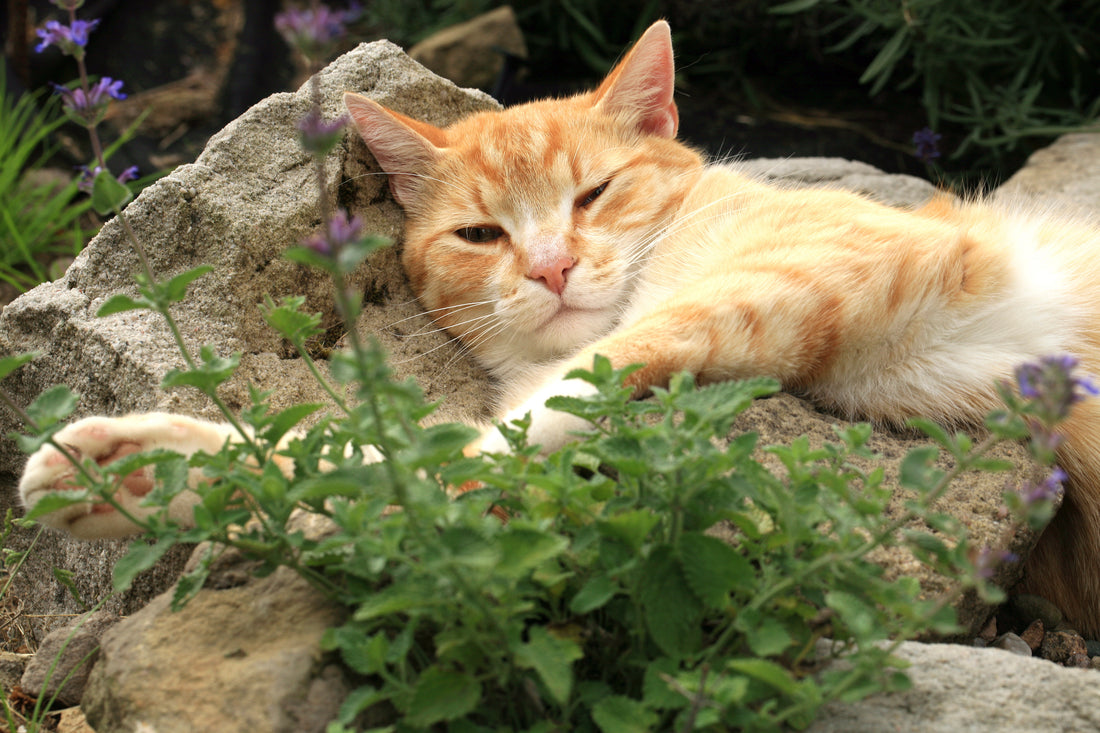One of the stranger aspects of the modern human-pet relationship is that many cat owners don’t realize they have been dosing their pets with a psychoactive substance… and we are, of course talking about, catnip.
Generally, people are familiar with a plant called Catnip, but not many know what effects the plant may cause when it gets into close contact with the cat and how quickly the behaviour of your usually well-behaved normal pet can change.
We are hoping to give you a bit more insight into how catnip works, why cats act strange around it and whether there is a thing of a cat being ‘overdosed’ on catnip. Equally, we will confirm or deny the rumours of dangerous catnip and whereas you can still have it in your home.
What Is Catnip?
Catnip, also called Nepeta cataria, is a commonly found herb in many households and gardens and it comes from a member of the mint family. The plant is particularly popular and spread in North America has feather-like, light-green foliage with lavender flowers. In the past, Catnip leaves were often used for tea making as the properties of the flowers of the herb include cough and sore throat relief. Interestingly, catnip can be also found as an ingredient in some of the bug sprays.
So, why do cats react to catnip?
Did you know cats have an extra scent organ called the vomeronasal gland in the roof of their mouth? This allows for scents that are collected in the nose and mouth to be carried to the brain through special pathways.
Nepetalactone is the oil that’s found within the catnip plant’s leaves that affect behavioural changes in cats. In order to do that, the cat needs to be exposed to this substance and therefore, smell or eat catnip. What usually happens is that Catnip mimics feline sex hormones, so cats enjoying this substance will often display behaviours similar to a female cat in heat however, male cats can experience similar sensations as well.
How can you spot these behaviours?
Oftentimes, you will notice the cat being overly affectionate, relaxed, and it will seem extremely happy. However, similar to humans, cats can also display different behaviours when their senses are being influenced by external factors such as catnip. Some cats can become very active, playful or sometimes even aggressive. Catnip is not all bad actually and can help you manage your cat’s mental health and wellbeing. Cats that display the signs of anxiety or pain can benefit from catnip as it will ease the pain and calm them down.
Interestingly enough, some veterinarians recommend using catnip to help with separation anxiety which can be especially common after numerous lockdowns we have experienced over the past couple of years.
How Long Does Catnip Last?
Catnip effects will vary in length, depending on the cat. Usually, the behaviours we have described above could last between 10-30mins and the signs will wear off gradually. However, Catnip tends to lose its potency the longer it is exposed to the outside world and you will soon realize after some time has passed your cat is no longer sensitive to smelling a catnip. However, be aware that in some cases too much catnip can cause some health problems in cats resulting in vomiting, diarrhoea or dizziness.
What about kittens and Catnip?
Generally, Catnip is not harmful to kittens as most cats won’t react to it until they reach the age of 6 months to 1 year. This is related to their development of senses and the older they grow the stronger sensory system they develop.
Is catnip suitable or dangerous for your cat?
Unfortunately, there is no universal answer. Cats respond differently to catnip and therefore it would be best to talk and discuss with your veterinarian.
However, if you happen to have catnip in your garden or home there is no need to panic and immediately get rid of it. When introducing a cat to catnip for the first time you might want to observe behaviour for a while to see the initial reaction. If your cat tends to be more sensitive to the effects of catnip, you might want to place it somewhere where the cat doesn’t have easy access or create a small fence around it in the garden to discourage the cat from going close to it.
If you are interested in growing your garden, have a look at Grow your Own Catnip Kit that will help you to kickstart your gardening journey. With plenty of information and easy steps to follow even the newbies will feel like gardening professionals.
Looking for more gifts, visit The Lovely Stuff Company to explore amazing gift ideas and Grow Your Own Kits that make for thoughtful and unique gifts for your loved ones.

